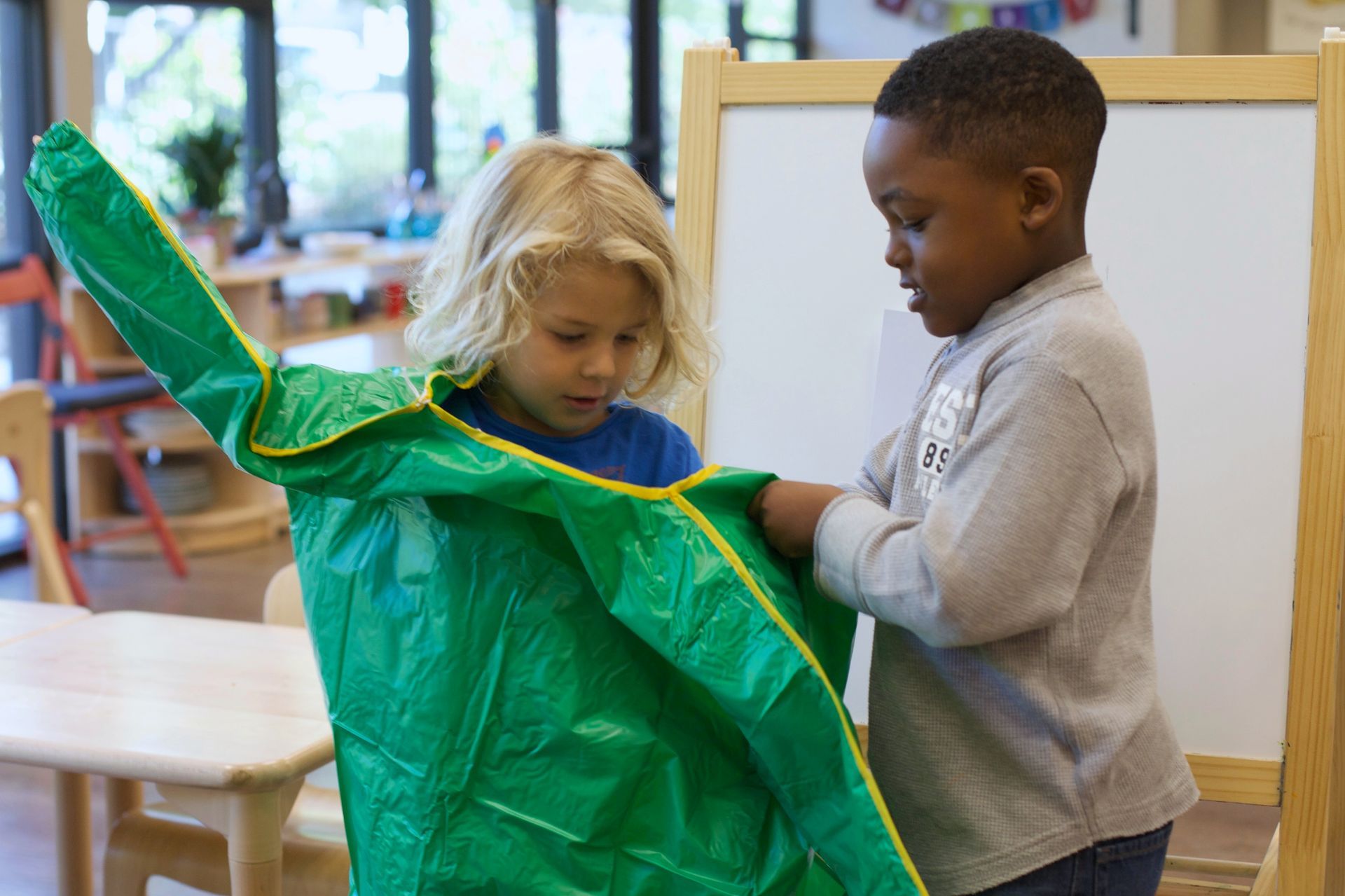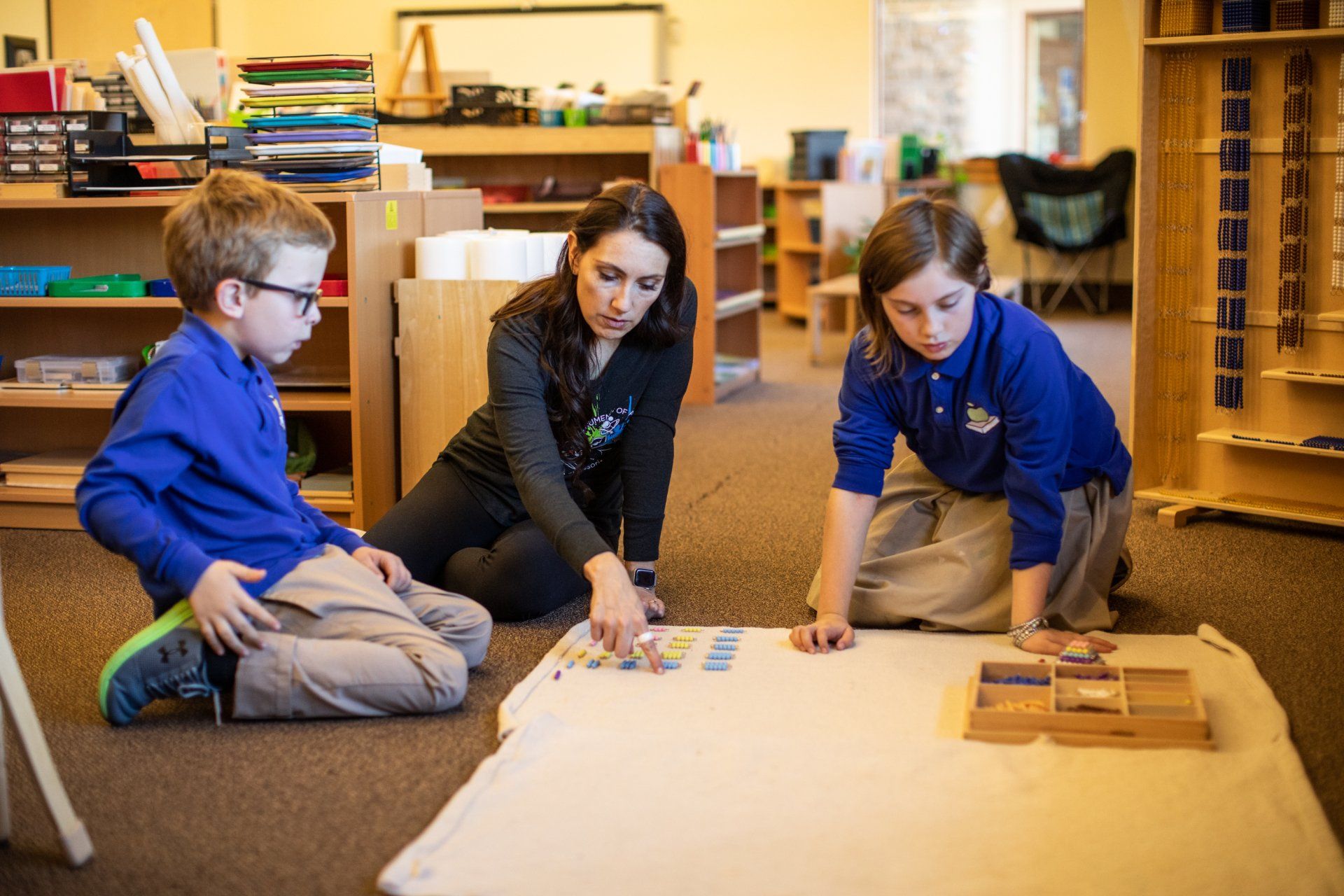November 2, 2020
Toddlers are together, in the classroom serving children 16 months to two years. Preschool classrooms are for children ages 2-3, with Pre-K and Kindergarten-aged children 3-6 years together. Lower Elementary years serve children ages 6-9 and Upper Elementary for 9-12 years of age. What are the benefits of structuring a classroom this way? Learning at an Individual Pace Children in multi-age classrooms tend to have a little more flexibility when it comes to mastering skills within a specific timeframe. Montessori believes learning is not linear, and learners have periods of significant growth, plateaus, and even the occasional regression. In multi-age classrooms, children are typically able to work at their own pace without the added pressure of keeping up with the whole group, or even being held back due to the whole group. When students in a classroom range in ages, everyone has someone they can work with, regardless of their skill level. Children don’t feel left behind if they struggle with a concept, and they also don’t feel bored by repetition of something they have already mastered. Montessori teachers who teach in multi-age classrooms have deep knowledge for a range of developmental abilities, leaving them well-equipped to differentiate instruction for each individual child. Building Stronger Relationships In traditional schools children move from one class to the next each year. This means a new set of academic expectations, different routines, and different classroom structures, and a different teacher. In Montessori classrooms teachers typically have 3 years, get to know a students and their families, and vice versa. When teachers really get to know a student, they are able to tailor instruction in regards to both content and delivery. They know how to entice a specific child onto a topic or into a lesson. They know to help their students feel successful. Parents have an opportunity to get to know teachers better this way, too. If your child has the same teacher for two or three years, the lines of communication are strengthened. Parents get to know the teacher’s style and expectations. The home to school connection is more cohesive, and the child benefits the most. Mentors and Leaders When a child spends multiple years in the same class they are afforded two very special opportunities. Students who are new to the class are fortunate enough to be surrounded by helpful peer mentors. Children often learn best from one another, and they seek to do so naturally. First and second year students watch as the older children enjoy advanced, challenging work, and this inspires them. They look to the older students for guidance, and the older children are happy to provide it. The older students who have been in the same classroom for a year or two, gain the chance to practice leadership skills. In Montessori classrooms, the older children are often seen peer tutoring, assisting with materials that a younger student needs help with, or lending a comforting hand as younger students adjust. The best part is children make the transition from being dependent to becoming a leader in their own time. It does not happen for all children at the same time, but when it does it’s pretty magical to observe. Mirroring Real-Life There is no other time in life in which people are split into groups with others who are exactly their chronological age. Whether in the family, the workforce or elsewhere, people ultimately need to coexist with people older and younger than themselves. This allows for a more enriching environment, brimming with a variety of ideas and skills. Beginning this experience from a very young age helps children to conform to society with confidence.








